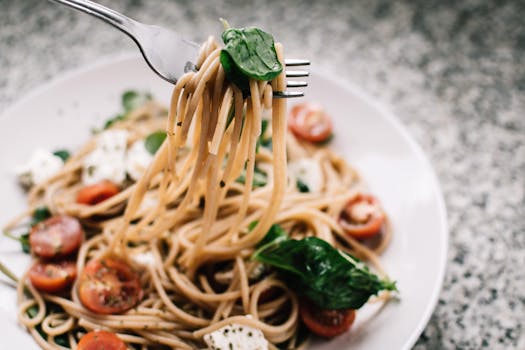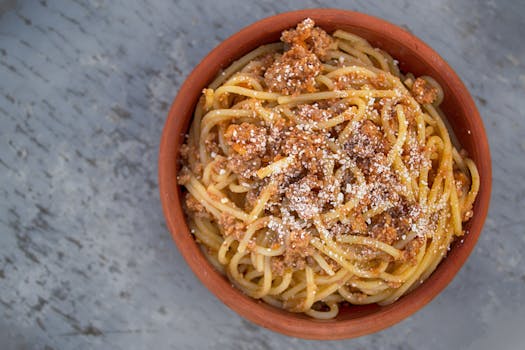Benefits
High Protein Content
Source of Energy
Dietary Fiber (in whole grain versions)
Versatility in Cooking
Cultural Significance
Get creative with spaghetti
Spaghetti lends itself to a multitude of creative culinary applications beyond the classic pasta dish
For a twist on traditional breakfast, it can be transformed into spaghetti pancakes by mixing cooked spaghetti with eggs, cheese, and seasoning before pan-frying until crispy
In the realm of snacks, spaghetti can be baked into crunchy, savory bites when tossed with olive oil, herbs, and grated parmesan, then scattered on a baking sheet and roasted until golden
For an unconventional desert, spaghetti can be used to create a noodle-based kugel, incorporating sweet elements like sugar, cinnamon, and raisins, showcasing its versatility in both savory and sweet contexts
Something you can make with spaghetti
Origin
Spaghetti is a type of pasta that originated in Italy. It is believed to have been developed in the southern regions of Italy, particularly in Sicily, around the 12th century. The word \"spaghetti\" is derived from the Italian word \"spago,\" which means \"thin string\" or \"twine.\" Initially, spaghetti was made by hand, but with the advancement of pasta-making technology, it became more widely available and popularized throughout Italy and eventually the world. Today, spaghetti is a staple in Italian cuisine and is enjoyed in various dishes such as spaghetti carbonara, spaghetti Bolognese, and spaghetti aglio e olio.


